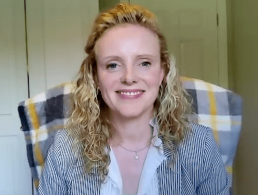The general manager of Johnson & Johnson’s Cerenovus site in Galway tells us about his role and the importance of gender equality in STEM.
Michael Gilvarry is the general manager of Cerenovus in Galway, which is part of the Johnson & Johnson family of medical devices companies.
It is a research site that develops a broad portfolio of innovative devices that aim to help patients after they have had a stroke.
Here, Gilvarry gives an overview of his role at Cerenovus and what a typical day looks like.
What kind of teams do you oversee at Cerenovus?
Cerenovus is a global leader in neurovascular care. Our commitment to changing the trajectory of stroke is inspired by our long heritage and dedication to protecting patients from stroke-related disabilities.
The functions at the Cerenovus Galway site are R&D, supply chain, quality, clinical, regulatory, finance and marketing. As well as leading the R&D in acute ischemic stroke, Cerenovus Galway also manufactures and supplies approved devices to global markets and oversees clinical activity.
What does a typical day at Cerenovus look like for you and your teams?
Our work at Cerenovus is focused on changing the trajectory of stroke. How do we do this? It all starts with scientific research into the underlying diseases which lead to stroke. We conduct this work under the umbrella of the Cerenovus Neuro Thromboembolic Initiative (NTI).
We work closely with universities and academics, including strong collaborations locally with GMIT and NUI Galway. This helps us recreate stroke in bench models. When we can simulate stroke in a lab environment, the creative process begins to think up new ideas for devices that can solve the real-world scenarios that we recreate. We then design and build in our prototype lab and test and refine designs until we have a concept that we are confident will work clinically.
Quality assurance is an essential part of what we do, so before devices are approved, they undergo rigorous design testing generating thousands of data points that are eventually submitted for approval before we can bring the device to market.
For our approved devices, we manage the supply chain from end to end – from material purchases, supplier quality, manufacturing devices through our external partners, sterilising and releasing the product, and shipping to distribution centres all over the globe.
What does leading the R&D taskforce involve?
The Ireland R&D taskforce is about bringing together our diverse businesses to strengthen our research, development and innovation footprint and looking at the external environment – such as how we engage with universities in research, strengthening and developing a diverse talent pool and networking with other researchers across Johnson & Johnson.
We are fortunate to have the support of agencies such as Science Foundation Ireland, IDA Ireland and Enterprise Ireland that recognise how important it is for us to continue to make scientific and technology advancements so we can continue to be leaders in the life sciences sector.
Is there anything you’re particularly excited to be working on at the moment?
We are continuously working on new product developments and building on past success. There is nothing more rewarding than hearing about successful patient outcomes after being treated with our devices. And it a big personal driver for me to continue to push the boundaries of technology to put even better tools in the hands of physicians that make stroke treatment quicker, easier and even more effective.
The growth of our business has led to a significant expansion of our facility, which is almost complete. I’m also excited that the business is recruiting new roles to continue to expand our capabilities. Each year we have seen new, talented people join our team and they are bringing the business to new heights. I’m excited to continue to bring on new employees that will bring new perspectives, ideas and diversity to our team.
It looks like your responsibilities are multifold, from R&D to boosting gender equality. How do these responsibilities complement each other?
I don’t just see this as my responsibility as a business leader in Johnson & Johnson, but also as a responsibility as a member of the scientific community and as a globally minded citizen who feels passionately about developing future leaders.
When I reflect on my career, I appreciate how fortunate I was to have mentors to guide me along my path from an engineering graduate to my current role as general manager. Looking back, I appreciated the importance of having a mentor to support, advise, challenge and encourage in the right measures.
I was delighted to have the opportunity to sponsor the Johnson & Johnson women’s leadership and inclusion employee resource group for across our Ireland campuses, which promotes the development of female leaders in the organisation. The programme supports professional development through networking initiatives, mentorship programmes and personal brand development.
We recently expanded Johnson & Johnson’s WiSTEM2D programme to NUI Galway, offering more female STEM students support even before they start their careers. This programme has been very successful and is helping build a more diverse STEM community in Ireland.
Why do you think gender equality should be a priority for more science and tech companies?
At Johnson & Johnson, we recognise that women are continuously and disproportionately missing from the STEM workforce and in higher education. We need a more diverse STEM workforce if we are going to unleash our potential to change the trajectory of health and stroke.
More than 5,000 people work for Johnson & Johnson across 10 sites in Ireland. We have women working in STEM roles every day and we put them to the forefront to showcase that an exciting career in STEM is possible.
The lack of representation of women in STEM is high, so businesses need to spend time designing accessible solutions to attract more women to the sector and help remove barriers – thereby opening pathways, creating networks and job opportunities.




